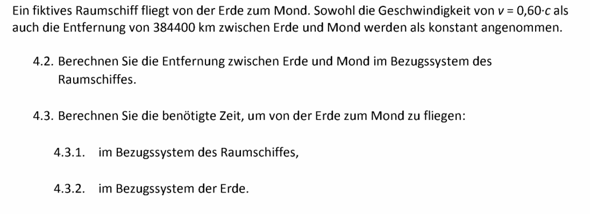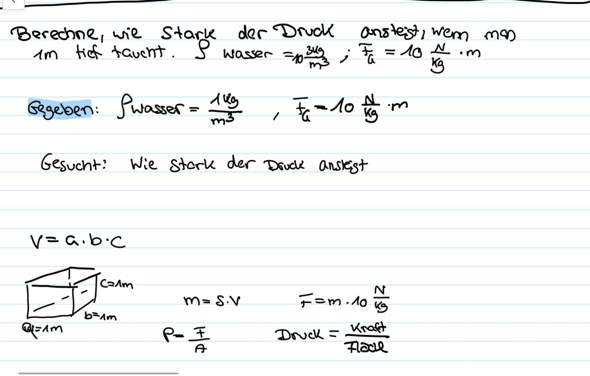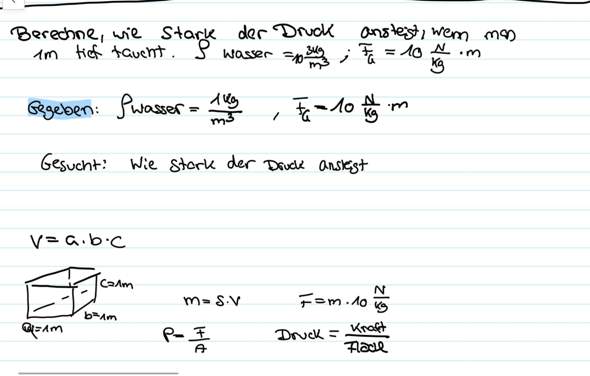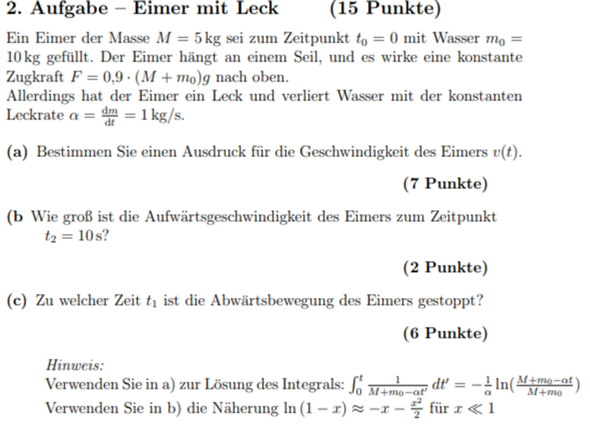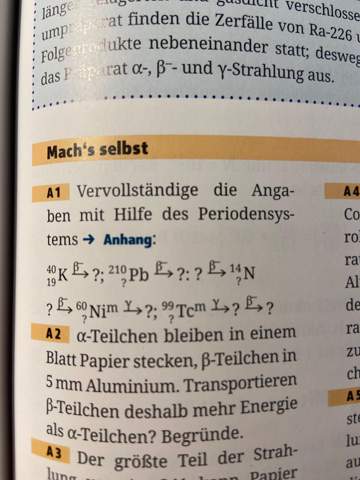Guten Abend (um 4 Uhr)
Nachdem Physik 2 erfolgreich hinter sich gebracht wurde, geht es jetzt daran Physik 1 zu bezwingen. Folgende Aufgabe sorgte für eine schlaflose Nacht.
Ein Eimer der Masse M = 5 kg sei zum Zeitpunkt t0 = 0 mit Wasser m0 = 10 kg gefullt. Der Eimer hängt an einem Seil, und es wirke eine konstante Zugkraft F = 0,9 · (M + m0)g nach oben. Allerdings hat der Eimer ein Leck und verliert Wasser mit der konstanten Leckrate α = dm/dt = 1 kg/s.
a) Bestimmen Sie einen Ausdruck fur die Geschwindigkeit des Eimers v(t)
Verwenden Sie in a) zur Lösung des Integrals: ſ (von 0 bis t) 1/ (M+m0−αt′ dt′ = − 1/α ln(M+m0−αt /M+m0)
b) Wie groß ist die Aufwärtsgeschwindigkeit des Eimers zum Zeitpunkt t2 = 10 s? Verwenden Sie in b) die Näherung ln (1 − x) ≈ −x −x²/2 für x≪
c ) Zu welcher Zeit t1 ist die Abwärtsbewegung des Eimers gestoppt
Jensek81'scher Ansatz
a) Fges = F - Fg
Fges = m * a
0,9 * (M + mo) - g - m * g = m * a
<=> a = 0,9 * (M + mo)g-mg / m
v (t) ds/dt t
v(t) = ds/dt
v (t) = ſ adt = ſ 0,9*(M+m0)g-mg / m dt
v(t) = 0,9 * (M +mo) g - mg / m | + vo
ſ (0 bis t) = (M + mo - αt't) dt' = -1/α ln (M+moαt/M + m0)
v(t) = 0,9 (M + mo) g - mg /m * t + vo 1/α
=> ln (M + mo - α t / M+ mo)
b) v (t) = 0,9 * (M + mo) g - mg / m * t + vo - 1 / α ln (M + mo - αt / M + mo)
M = 5 kg , mo = 10kg, g = 9,81 m/s²
v (t) = 0,9 * (M + mo) g - mg / m * t2 - 1/α ln (M + mo -ö α t2 / M + mo)
=> lm (M + mo - α t0/ M + mo) = - αt2 / M + mo - 1/2 (α t²/ M + mo)²
v (t2) = 0,9 * (M + mo) g - mg / m + t2 + 1/2 t2 + α²/2(M + mo) t2²
v (t2) = 132, 3 m/s
c) αt² + 2t1 - 1,8 tg ??
-2 + Wurzel (2² - 4 (1,8)/2
= 3,31 ??
Ich bin mirleider überhaupt nicht sicher ob das korrekt ist?
Kann mir jemand bitte weiter helfen.
Jensek81'sche Grüße
Jensek81
